Hi, and welcome to the 1st of September monthly blog post on AidanBooth.com!
After 7 weeks on the road traveling through the French Alps, to Stockholm, through Scotland, and wrapping up with our Blueprint Academy mastermind event in London, I’m now back in my office in Buenos Aires (it’s good to be here!).
Here are a few of the highlights…

Being on road for such a long time with my wife and our 9 month old in tow, I was constantly reminded of the need to be incredibly effective in the ‘work time’ I had available…
I spent a lot of time thinking about effectiveness, and business growth for people with very little time available. Next month I’ll share my detailed thoughts about that, and how to effectively run your business on minimal time.
From ZERO to $108,000/MONTH…
This month is about a success story from one of our 100k Factory students (Rory). Rory and his business partner have progressed from ZERO (they started from scratch) to now earning over $108,000/month.
In addition to being a 100k Factory member, Rory is also a member of the Blueprint Academy, and we asked him to share his story with other Blueprint Academy members at our recent mastermind event in London (in August). You can actually download his entire presentation by CLICKING HERE, and read the summary notes below.
Here’s what we cover:
- Why the 108K Factory?
- Why It’s All In The Numbers!
- The Email Automation Tools You Can Use In Your Business Every Day!
- Powerful Screenshots!
- What Other Emails Can You Send?
- What Other Things Can You Do To Help Achieve 20% Net Profit?
- Why a VA is Crucial To The Success Of Your Business
- How To Choose The Perfect VA For Your Business
- What Duties Should You Give Your VA?
- Our Final Thoughts
Why the 108K Factory?
$108,000 in revenue in JULY (one month) from ONE simple eCommerce store. That’s what Rory and his partner have built… pretty darn impressive however you slice it.
Rory’s journey started as a 100k Factory student.. but what he’s built is actually $1,000,000 Factory, because he’s doing over $100k EVERY month now 🙂
Here’s a screenshot showing the $108,000+ revenue generated in July:
Why It’s All In The Numbers!
These are the exact numbers that Rory is using that are making their projects successful:
But what do these numbers mean, and why YOU should know your numbers…
- 100,000 – Current run rate per month
- $18.79 – Average cart value in the month of July
- 200 – Average numbers of orders a day
- $2.15 – Lifetime value per visitor over the last 90 days
- 3x – Return on ad spend (for example; spend $1, get $3 back)
- 16% – Customers returning (repeat purchasers)
- 7% – Conversion rate on the site
- 250% – Mark up everything by this amount including shipping
- 60% – Margin
- 20% – Net profit
- 10am – Time to get out of bed providing there’s $1,000 in the bank by this time!
- 25c – The amount of money received for every email sent out. By not using your email list you are leaving money on the table, there are many different tools available for email automation, which we’ll delve into deeper in this blog post
- 2 – Two business partners are working on this business
Having a business partner is really important, to find out why, check out my August 2017 blog post, ‘How To Find The Perfect Business Partner’: https://www.aidanbooth.com/business-partners/
TIP: Knowing these numbers is paramount to your business success, if you don’t know your numbers, you won’t know if you’re making a profit or not and where the money in your business is.
The Email Automation Tools You Can Use In Your Business Every Day!
As we’ve mentioned above, tools are key when it comes to building and growing your eCommerce business.
Here’s an overview of some of the email automation tools currently being used and tested by one of our students:
Remarkety
Remarkety is eCommerce email marketing, you can recover abandoned carts, wake up inactive customers, make product recommendations and send automatic follow up emails.
Remarkety is purely for eCommerce, they don’t deal with any other kind of business, making it an ideal email marketing solution.
With Remarkety, you can maximize the value of every customer, decrease acquisition costs and increase sales.
- Pros: Excellent tool, good user interface, with excellent reporting
- Cons: No SMS integration is currently available
Check out Remarkety here: https://www.remarkety.com/
Klaviyo
Klaviyo is an email marketing platform, powered by data, built for ecommerce and web businesses.
- Pros: More functionality than Remarkety (although not required)
- Cons: Chunky cluncky platform, a little over complex for its requirements
Check out Klaviyo here: https://www.klaviyo.com/
Carts Guru
Carts Guru has multichannel retargeting to include: emails, Facebook ads, Instagram, SMS, and automatic calls.
Carts Guru sends out an abandoned carts email sequence together with an SMS message, the idea behind this is to force email opens and force conversions, giving you an overall open email rate.
- Pros: Email automation software that includes SMS integration
- Cons: It doesn’t include shipping in its reporting, and the stats are a little inaccurate
Check out Carts Guru here: https://carts.guru/en/
Powerful Screenshots!
Very kindly (with a little arm twisting) Rory agreed to share their screenshots using the tools mentioned above of their campaigns.
Remarkety – generated revenue (over a 10 day period):
Carts Guru – generated revenue (please note the figures have been adjusted by reverse engineering to paint a more realistic picture). We’ll talk more about reverse engineering later on in this blog post…
Combined revenue @ $11,424 over a 10 day period using the power of email automation.
What Other Emails Can You Send?
As we’ve seen above the use of email marketing should be a crucial part of your marketing business plan, let’s look at what other emails you can send to your customer:
- Cart abandon
- Browse abandon
- Inactive customers
- Welcome series
- Order follow up
- Happy Birthday
- Feedback request
- Campaigns content*
- Campaigns sales*
Let’s look at the figures:
- Open rate 30% (apart from * as these are sent manually)
- 28% click through rate
- 25c per every email sent out
Here’s an example sequence of emails:
1st email: Sent 1 hour following abandoned cart with no coupon ‘Abandon 1 hr no coupon’.
2nd email: Sent 24 hours following abandoned cart with no coupon ‘Abandon 24 hr no coupon’. Please note this email will also be designed differently to grab attention, and may say ‘running out of stock for example’.
3rd email (split test A): Sent 30 hours following abandoned cart with ‘Abandon 30 hr Giveaway Private Split A.
3rd email (split test B): Sent 30 hours following abandoned cart with ‘Abandon 30 hr $5 Split B’.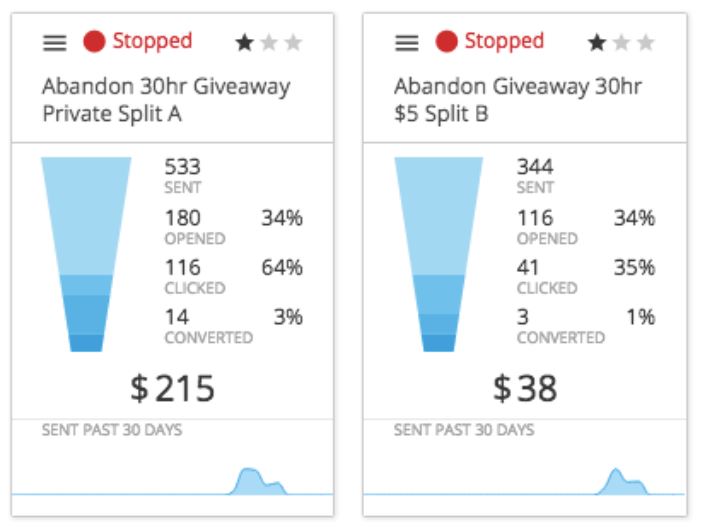 Let’s look at those split tests in more detail…
Let’s look at those split tests in more detail…
Split Test A
In split test A, a private offer was made to people who felt the shipping was too high (this was based on the free product + shipping model). Bearing in mind you can’t discount shipping by a percentage or give away a coupon for a product that’s free, therefore you have to think outside the box and that’s exactly what our student did by using an app called ‘Easy Lock Down’.
The app locks down a product so no one else on your site can see it by creating a private page with a password. A private offer was created to those customers who felt shipping was too high, adding a value to the product and discounting the shipping down to 75c, thus providing a new offer.
For more information on the Easy Lock Down app, check it out here: https://apps.shopify.com/easylockdown
Split Test B
In split test B above, a $5 giveaway was made to 27 people, let’s look at the figures:
- 576 revenue : 346 gross profit
- 135 coupon value
- 211 profit
In this example, $12 was made for every $5 coupon given out, wouldn’t you do that all day long?!
Please bear in mind you can lose on this offer, but that’s quite rare.
4th email: Sent 48 hours following abandoned cart with a 10% coupon ‘Abandon 48 hr 10%’.
The next email was the ‘free plus shipping abandon recovery’.
- 5th email (split test A): Sent 120 hours following abandoned cart with ‘Abandon 120 hr free ship > $30 Split A’.
- 5th email (split test B): Sent 120 hours following abandoned cart with ‘Abandon 120 hr free ship > $50 Split B’.
Let’s look at those split tests in more detail…
Split Test A
The test here is quite simple, in split test A, free shipping was given for all orders over $30.
Split Test B
In split test B, free shipping was given for all orders over $50.
And the winner was (surprisingly)….!
TIP: The results of this test just goes to show that split testing is absolutely key in your email campaigns
The last email in the sequence named ‘abandon 168 hr’, is asking for feedback.
At the bottom of the email list some ‘recommended for you products’ so it isn’t a hard selling email, leaving a better taste in the customers mouth at the end of the series.
All of the above screenshots relating to the campaigns have been taken from Remarkety, so you can see exactly how user friendly the interface is.
What Other Emails Can You Send To Your Customer?
Use your imagination and think outside the box as to what other emails you can send to your customer.
As an example, send out a ‘staff picks’ email weekly, check out the stats from the example campaign below:
What Other Things Can You Do To Help Achieve 20% Net Profit?
As we’ve discussed above, email marketing can make a huge difference to your bottom line. Here are some other things you can do to help make more sales, keep more money in the business, and achieve 20% net profit.
Let’s have a look at these in more detail…
World Domination
That goes without saying 😉
The main market we deal with is the US, it’s important to start here as it’s such a huge marketplace, then scale to the following countries:
- Australia
- Canada
- United Kingdom
- New Zealand
- Ireland
- Etc.
Here’s a breakdown of the countries Rory sells to:
TIP: Always use epacket for delivery, but bear in mind the cost of epacket varies from country to country, so please factor this in to your numbers
Systems
It’s important to have good systems in place, (Rory currently has 3 VA’s in the Philippines and 1 locally).
Here’s a breakdown of their duties:
Partner 1: Emails, and finding and testing new products (tests 20 per week)
Partner 2: Facebook ads and finance
All other tasks are completed by VA’s, which we’ll look at further later on in this blog post.
TIP: Remember, systems can ALWAYS be improved and what doesn’t get measured NEEDS to be improved!
Offer
One thing Rory has learnt is it’s not necessarily the product that’s the winner, it’s the offer.
They had a particular product selling for $13.95, they could sell and scale it but it wasn’t making the 3x required.
The solution?
They reverse engineered the whole process and added $2, the product ended up being their best winner for over two months, and it’s still selling to this day!
Reverse Engineering
By reverse engineering the process, ask yourself ‘what would have to happen to make it work’, as an example look at the following:
- Your conversion rate
- Spending on ads
- Cost of product
- Etc.
TIP: You can also reverse engineer the process by using historic data
Google Adwords
Currently on test, therefore there’s no results as yet, but something to watch out for!
Testing
Testing to find your products is absolutely key to your success, test, test and test some more!
Email Automation
As we’ve discussed here, you’re leaving money on the table if you don’t do this, so don’t ignore this aspect of your marketing.
Messenger
Use the messenger bot to build conversations with your customers, this will not only reduce support requests, but it can also answer questions like:
- Where’s my order?
- What’s the shipping time?
- Do you have this product?
- Etc.
Why a VA is Crucial To The Success Of Your Business
As we’ve mentioned above, having a VA is critical to the success of your business, freeing up your time to concentrate on the most relevant tasks associated with your skills.
Having a VA, will undoubtedly save you hours of valuable time.
TIP: Put a value and consider what is the best use of your time, concentrate on the best tasks, and outsource the remainder to a VA
For example, when looking for products in AliExpress, Rory puts all the links into a Trello board, and their VA comes back with the following:
- Product descriptions
- Pricing
- Facebook ads
- Ad text
- They even loads the products into the store
TIP: Trello is an awesome management tool, it keeps track of everything, from the big picture to the minute details, check it out here @ https://trello.com/
What Duties Should You Give Your VA?
As we’ve seen above, setting up your products descriptions, ads, etc., can be an enormous task that can be given to a VA to do, but there’s also so much more you can pass across and make better use of your time, such as:
- Product testing
- Fulfillment of orders
- Customer support
- Products going out of stock
- Facebook moderation
- Etc.
TIP: Facebook moderation is critically important, one negative comment on your Facebook ad means your sales on your ad will drop straight away, you can also use automation rules for this within Facebook
How To Choose The Perfect VA For Your Business
When choosing a VA, you need to set up a job with a detailed description, you can use sites such as Upwork, Freelancer, or Onlinejobs.ph to do this.
In your ad put ‘reply with Subject: code’ (make this up), also include an hourly rate.
When you receive the responses, eliminate everyone who doesn’t do that as they either haven’t paid attention, or haven’t read the entire ad.
Once you’ve eliminated some of the potential candidates, have the top 3 – 5 complete a task and choose those who do it quickly and accurately.
TIP: Build a cog in the machine by creating standard operating procedures for critical tasks with screenshots and/or videos
For more information on VA’s check out the following blog post ‘Virtual Assistant Gameplan’: https://www.aidanbooth.com/virtual-assistant-gameplan/
Our Final Thoughts
There are many things you can do to help grow and scale your eCommerce business, and as we’ve seen above, email marketing can seriously increase your bottom line and increase the lifetime value of your customer, so don’t avoid it!
Remember, testing is the key to your success, not only in email marketing, but in every aspect of your business 🙂
The 100K Factory business model has generated many successful students, so please do take the advice and tips provided herein and apply them to your business to generate more sales to help grow and scale your ecommerce business empire.
Thanks for reading!
Aidan


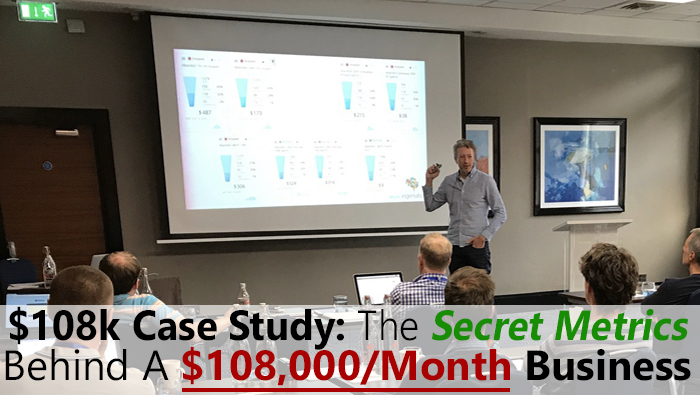
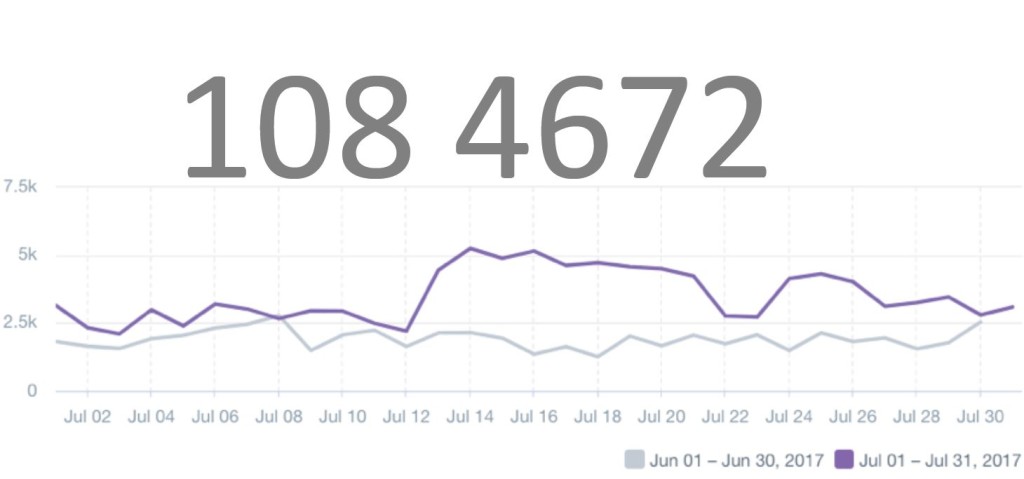
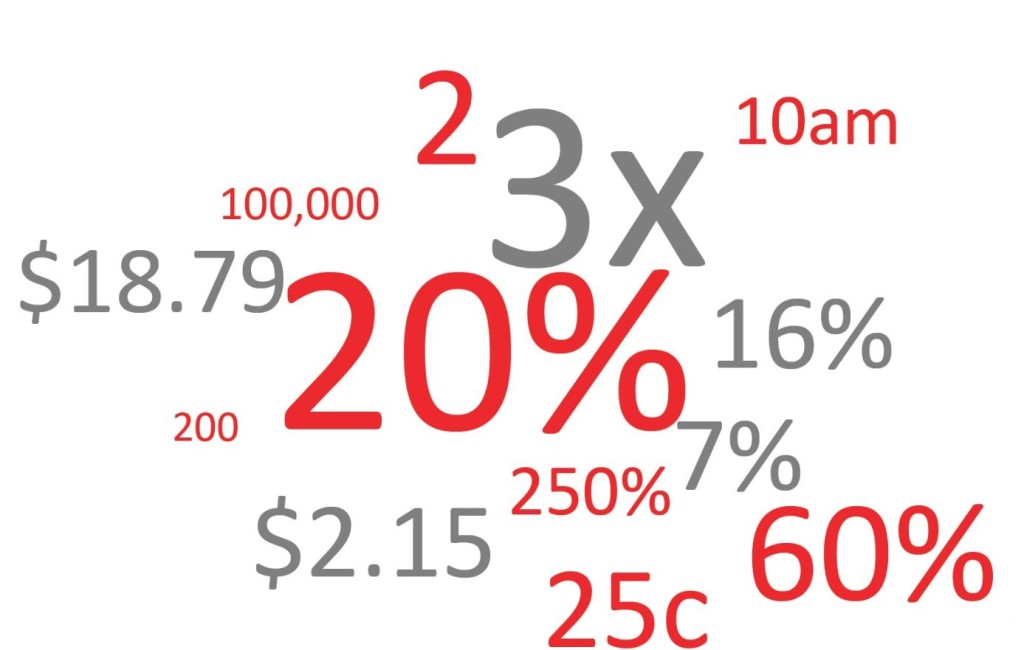
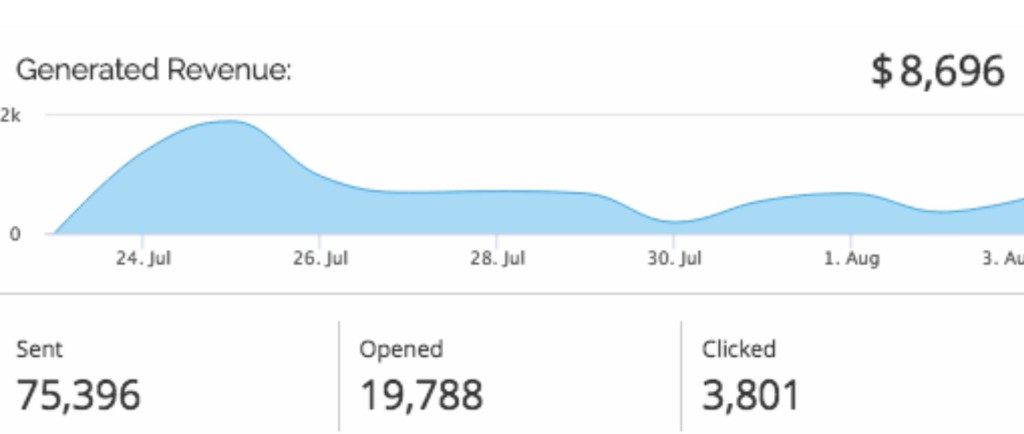
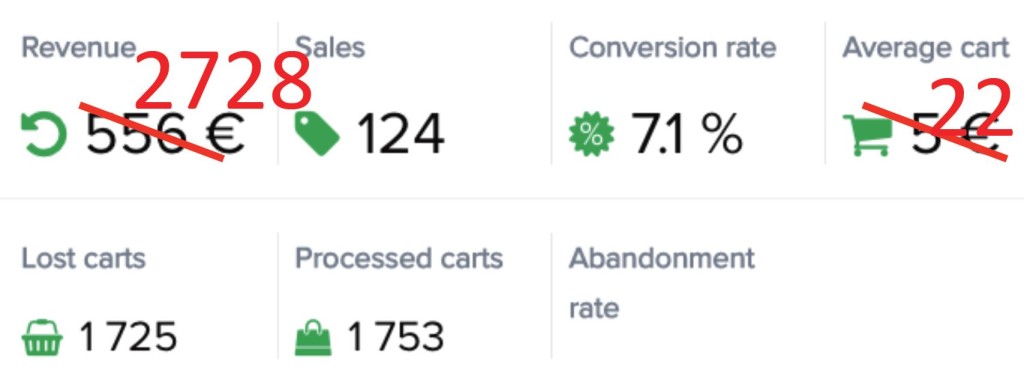

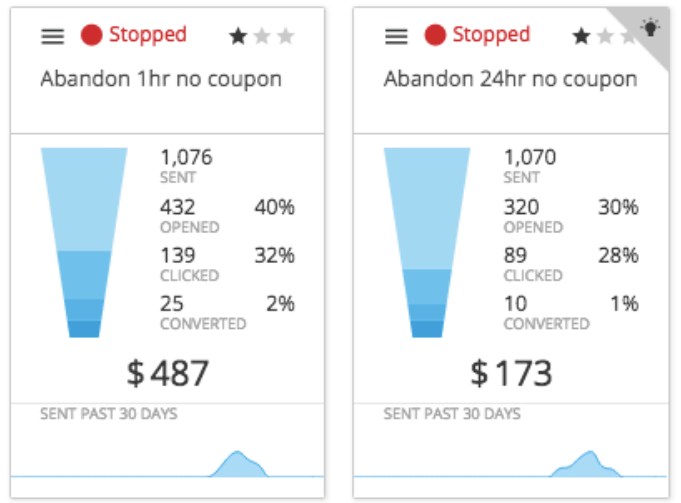
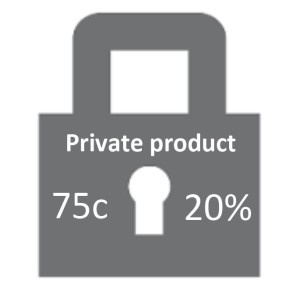
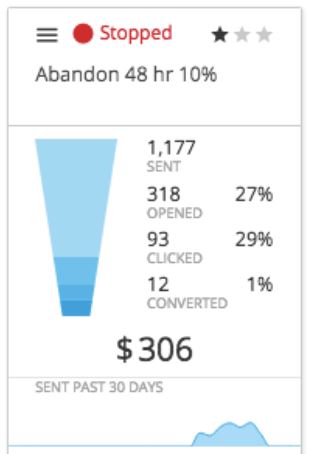
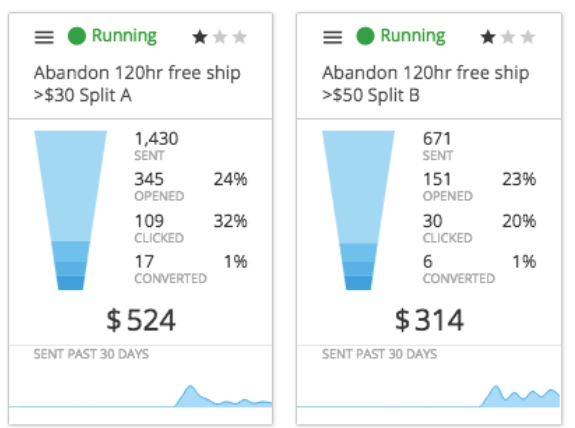
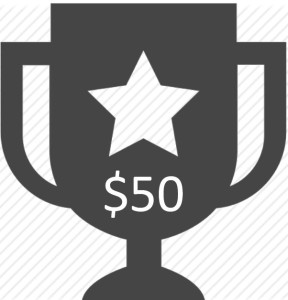
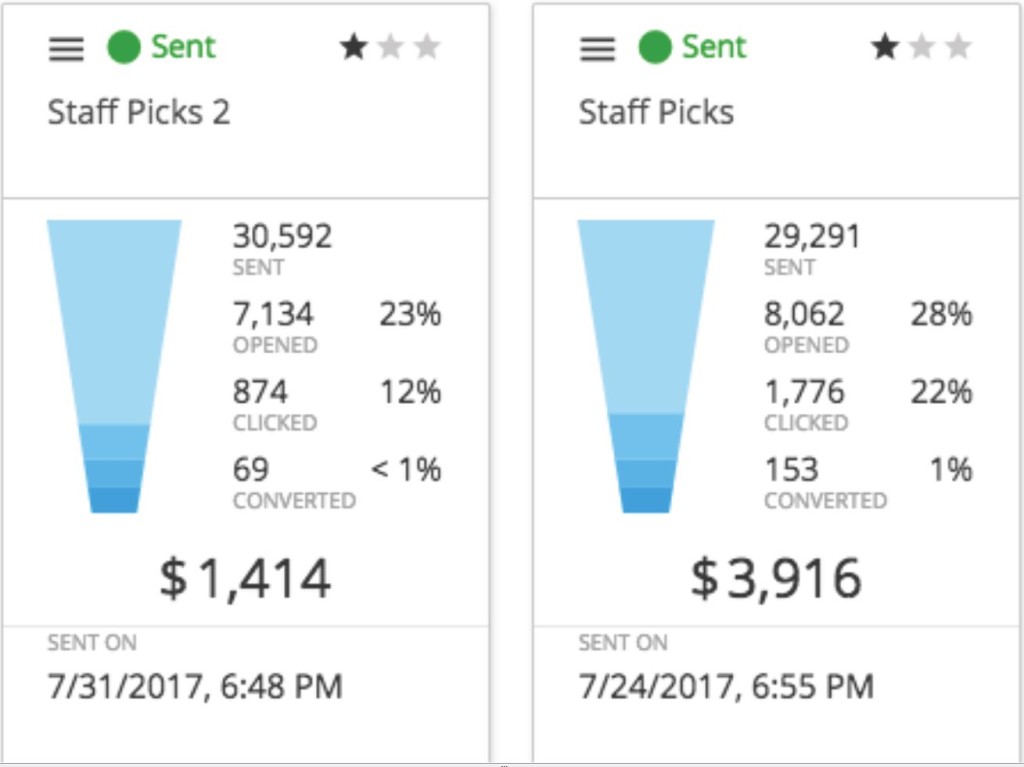
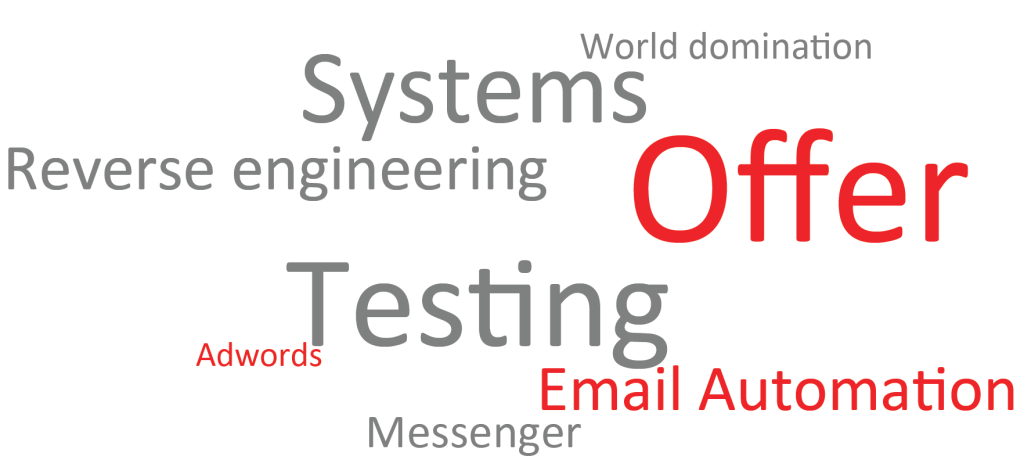
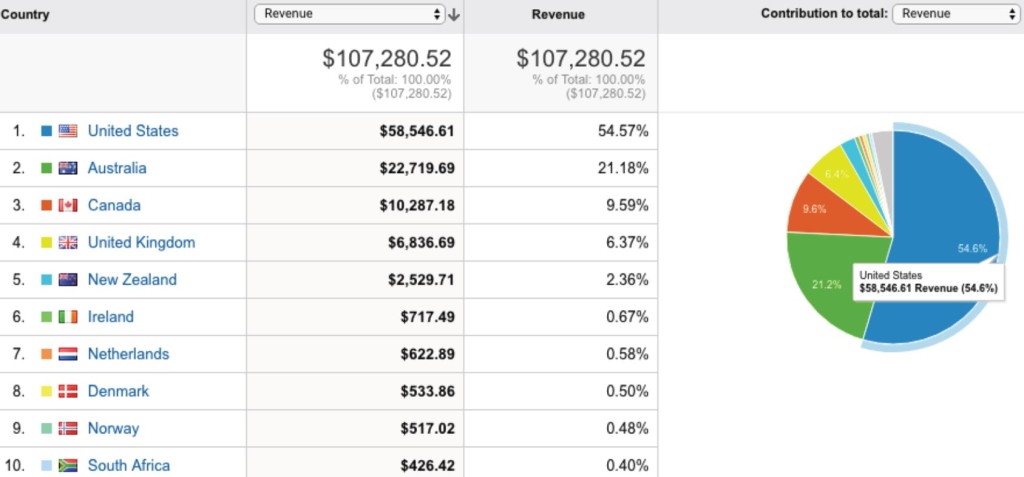




Very inspiring Aidan, I’m working hard here each day, and making small gains. Thanks for all the help!
Keep at it David, the rewards are worth the hard work 100 times over!
Hi Aidan, great post as always, and congrats to Rory! Question for you, is 20% net profit what we should expect on stores like the 100k Factory stores? Although my net profit is far less, it’s closer to 30% at the moment.
Hi Erica, typically what we see, is that initially net profit margins might be even higher, up to around 40%. As stores grow though, you’ll accept lower margins on some products, and you’ll make up the difference in higher volumes, I’m certain this is the case with Rory.
Hi Aidan and Erica,
Isn’t 20% net profit LESS than 30% net profit? Erica said hers at 30% was far less than Rory’s 20%? I’m confused.
So generally speaking … it seems getting to a $20k per month take home you’d need to be in the $100k per month revenue as a standard, right Aidan?
Hi Mark, I’m guessing Erica made a typo there 🙂 In my reply to Erica though, what I tried to explain is that initially (sometimes) net margins are higher. When volume increases, you can relax your profit margins on some products, and it can sometimes pull that down a bit overall, but your net $ number increases (because of the volume). As a general rule of thumb, small stores doing $10k/m should ideally operate above 30% net profit, and hopefully 40%. It does vary a LOT from niche to niche though, for example, the electronics niche has much lower profit margins than other niches. Hope this helps!
Hi Aidan:
Re: the electronics niche and low profit margins. Was this ever mentioned in the training? I selected this niche and could have avoided some grief.
Hi Gerry.. I think we did mention this, but even if we didn’t, you can work it out very easily and quickly because you KNOW the cost your buying products for, and what the expect sale price is 🙂 If you’re buying a mini-speaker for $12, and these things sell for $16, then it’s probably never really going to be able to work.
I’ve downloaded the PDF, about to start the video now.
Great!
Your travels sound (and look) amazing Aidan, you’re doing exactly what I want to be doing with my family (my kids are 5 and 7, so a little bit harder with school). Inspiring story, thanks to Rory for sharing.
Glad you like it Helen 🙂
Email has been the missing piece for me for some time now. I’ve got thousands of people on my list who have either purchased, or signed up through Wheelio or similar. I have an aweber account so will first see what I can do with that before investing in one of these other services.
Hi James, Aweber will be fine to begin with, you just won’t be able to do some of the more advanced segmentation, but you can certainly replicate some of the things that Rory is doing, and it’ll obviously help you drive more sales, given that you’ve got a good base of subscribers!
Very inspiring post, great as always!
Thanks, Aidan!
Thanks Theo!
Aiden, it would be awesome if there were videos and SOP’s already set up that we could give to VA’s. I haven’t the time or the skills to do that. Do you guys have something like that available we could use/purchase to share with VA’s?
It’s a great idea Izzy… we don’t have it through I’m afraid. If you’ve got a VA, and you’re going through the 60 Day Challenge, or are a 100k Factory member, you could just give your VA your credentials to see the training themselves though… alternatively, record a quick demo video yourself.. 🙂
Does 250% markup mean the price is 2 1/2 times the cost (including shipping) or 3 1/2 times the cost?
Hi Scott, I took that as being 2.5x cost + original price. For example… COG = $10. 250% markup = ($10 x 2.5)+$10 = $35… but there are a couple of ways this can be interpreted, so I’ll see clarification and post it back here once I get it.
Think of a 100% markup. That means taking the cost and adding the same amount to get the sale price. A 2.5 times markup is 250%. The way Aidan explained is what’s generally accepted as “markup.”
I like your way of explaining it much better Robert, I’ll remember that for next time!
From ZERO to $108,000! Impressive result!
What is the date of ZERO point start?
May I see the curve of expenses vs. profit?
How much someone need(money,time, web sites’s number)to start from ZERO to $10000/month?
Shortly: detailed business plan (if possible)
Hi Paul, haha, we’ve already asked a lot of Rory, so I don’t expect him to come back with all that info, but I’ll ask! 🙂 From memory, he started this store in June 2016 after the 100k Factory Ultra program. He had a few issues on his first go round though, so rebuilt it from scratch at the start of 2017 and has steadily climbed to $100k/m.
Very interesting and informative. Really good perspective on knowing all of your costs to ensure you are profitable, and not just thinking you are profitable.
Thanks Mark, glad you like it 🙂
Could you expand more on product testing please. Are samples sent to the VA? Or are they virtually tested using other means. Very valuable presentation.
Hi Craig, product testing is an entire training module inside 100k Factory and the 60 Day Challenge… so I can’t really do it justice in a blog post comment I’m afraid, sorry!! I can tell you though that once a winning product is found, most people get it sent to themselves to ensure it’s up to scratch..
OK. I give up! E-commerce is the rage these days and has been for some time now. Equally in direct proportion to this popularity is the tsonamy of information providers claiming to have created programs to equip you to promote e-commerce.
I have looked into a lot of these. However TWO aspects of this business has deterred me from getting involved.
ONE: Info-overload. What should be a very simple process of buying and selling has been BLOATED with so much information overload and then with those numerous so called ‘bonuses’ UGH!
TWO: STEEEEEP Learning curve! Even if you are ‘lucky’ not to be inundated with the unnecessary bonuses the core programs are usually so much infested with unnecessary padding that it would take an enormous amount of time implement.Double UGH!
To me ideally a step by easy step timed, mentoring program with a lot of interaction between the student and mentor is EXTREMELY VITAL to success. I am not sure Aidan YOUR program provides this….
Hi Azeem, interesting thoughts, always welcome 🙂
Here’s my take:
1. Info Overload, certainly an issue. You need the right training program… not something thats filled with fluff. Also, it’s worth remember, you’re learning how to build an entire business here, so inevitably there will be a lot of information, you just need to figure out how best to sort through it all.
2. Steep learning curve, sure. But that’s exactly why we recommend people follow a proven blueprint. Doesn’t need to be ours… in fact, we don’t even have any on sale open to the public right now… but you need a blueprint to ensure you don’t get stuck.
Finally… like everything in life, good things take sacrifice. try building a $100k/year profit business with a brick and mortar store… I don’t think you’ll find it easier than building an online business.
Hi Aidan
Thanks for yet another insightful blog post.
I’ve just finished watching Rory’s presentation which was packed with some real gems too!
When Rory mentions pricing products at 250% (Aliexpress price plus shipping cost) – do
you know if when he prices these products in store whether he then charges his shipping
on top of this 250%?
Rory mentioned that they charge shipping on everything so I just wondered how they apply
this 250% on their actual listings? i.e. whether they reduce it by the shipping charge
– as the shipping will be included at checkout?
I hope this makes sense!
Thanks
Barbara
Hi Barbara, yes, he charges shipping on top of his 250% 🙂 Glad you found it useful Barbara!!
Good stuff here, thank you.
As a 100k-er just beginning to dive into email marketing, what is your top recommended email platform to use, assuming ease-of-use is the top priority? I previously considered Mailchimp because of the no/low cost, but it sounds like Remarkety, Klaviyo, or Carts Guru would be preferred options since they’re ecommerce-oriented/integrated. I will gladly pay for greater ease-of-use.
Hi Brady, until you’re getting sales coming in every day, Mailchimp or Aweber are fine. It’s not hard to then switch to a more specialized version, like what Rory was discussing… but I always like to start things SUPER simple, then progressively grow systems out from that simple base.
That’s helpful, thank you Aidan
Aidan, this is really cool, thanks for sharing! I cracked up at them waking up at 10am. I’m a big fan of your story and would love your quick advice. I’m 25 years old, and I’m trying to plan the next 5-10 years of my life. Right now I have a great job that I enjoy and make good money, but I’m looking for more sources of income that I can handle part time during some weeknights and weekends (I want to make sure I don’t get burned out and quit by working every single day non-stop). My big goal is to have a personal income of $1MM/year in the next 5-10 years. I’m not looking for a get rich quick scheme. I’m looking for a place where I can focus and put my head down to keep growing financially and emotionally. Do you think this ecommerce store approach is a good one to get started with? I’ve heard a lot of examples of people making $10k-$100k/month within a few months or a year. At 20% profit margin, that’s around $24k-$240k/year net profit. Have you seen examples of people taking that even further with more time and experience?
Hi Guillermo, thanks for commenting. You sound a lot like me when I was starting out, at about your age (a decade ago!)… so I can relate to where you’re at 100% (I also had a good job before shifting to being 100% online, and quitting!). What I recommend you do is take a two pronged approach. eCommerce, in my mind, is where it’s at. So, with that in mind, I’d do:
1. Dropship selling (100k Factory method, as Rory explains in this post)
2. Build your own brand, sell on Amazon (and also on Shopify)
Both methods have pros/cons, and both protect you in different ways. You can ABSOLUTELY get to $1MM profit with either of these, or a mixture of both, we’ve seen plenty of people achieve this, and do it ourselves.
My final piece of advice for you.. FOCUS. Choose one of the two methods, get it working, then work on the other. DOn’t try to become an expert in both methods right away.
There is actually a 3rd method, which is kind of a fusion between both #1 and #2 above.. we’ll discuss that in the next few months in another blog post.
A lot of good information here. And I understand that a large store at this stage might have a lower profit margin. But I wish he would have given more details on his expenses. I’m particularly interested in his Facebook ad expenses. He gave this 3 to 1 figure. But I don’t know what that means exactly. Also, he didn’t say how much he paid for salaries which seems like one of his big expenses. And then there are the monthly expenses for the apps he uses. Don’t have a clear idea why his margin is 20%. Would be interesting to see what his major monthly expenses are.
Hey Dan, without being able to give you Rory’s exact numbers, here’s what we typically see, on large stores:
1. $100,000 in revenue
2. $30,000 in cost of goods
3. $35,000 in traffic cost (FB ads)
4. $5,000 in salaries, and other miscellaneous costs
The above is a VERY rough breakdown, it varies for every store… but I think it helps at least show you how the numbers break down!
Dan — About the “3 to 1” figure… I believe Rory was referring to Return on Ad Spend (ROAS) which you can select as a column in the FB Ads Manager.
Great presentation! Rory said that his partner was going to be coming up and going thru the financial data. Do you have a video of that presentation? Do they have a general store or a niche store? If it is a niche store what niche is it? Above it says that they started out with their store in 2016 under the Ultra model. Was that using Woo Commerce? Are they running in Shopify now? Thank you!